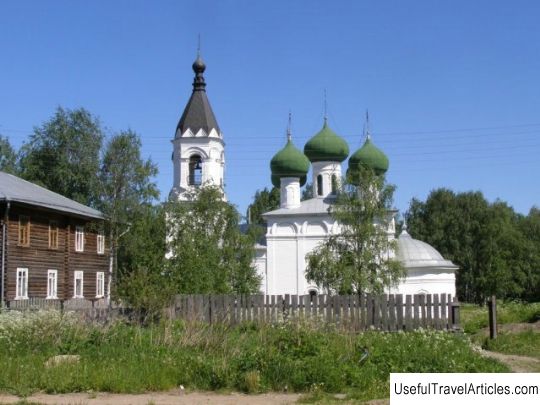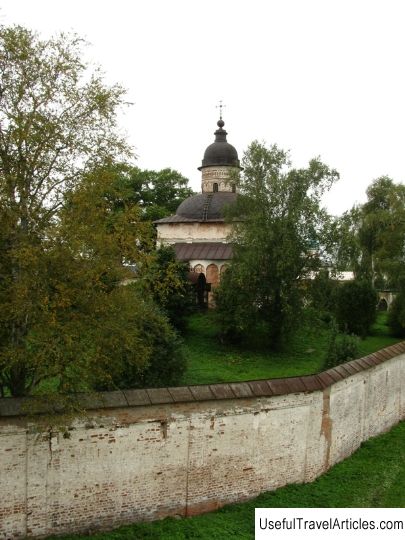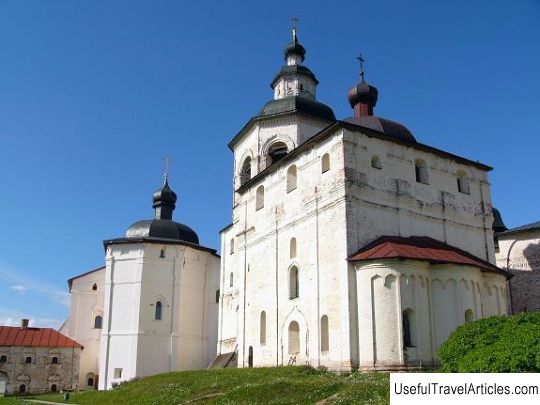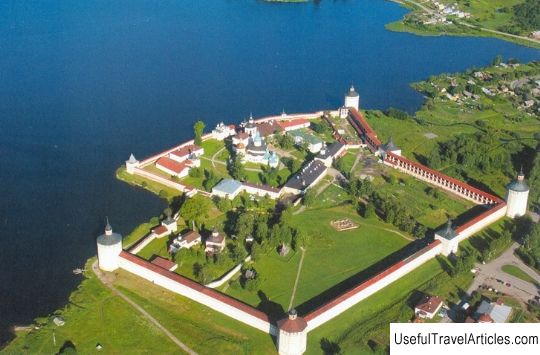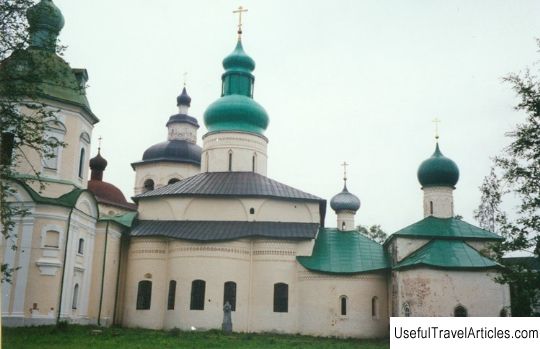Goritsky Monastery description and photos - Russia - North-West: Vologda Oblast
Rating: 7,7/10 (350 votes) 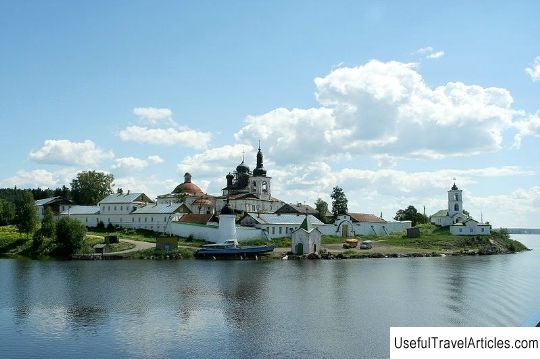
Goritsky Monastery description and photos - Russia - North-West: Vologda Oblast. Detailed information about the attraction. Description, photos and a map showing the nearest significant objects. Photo and descriptionThe Resurrection Goritsky Monastery is an Orthodox nunnery located in the village of Goritsy, Vologda Oblast, on the banks of the famous Sheksna River, namely 7 km from the Kirillo-Belozersky Church. The monastery is located in a picturesque place, where lush forest greenery turns into emerald green fields and meadows. The Goritsky Monastery is considered an architectural monument of federal significance. The Goritsky Monastery was founded in 1544 with the participation of Princess Efrosinya Staritskaya, who was the widow of Grand Duke Andrei Staritsky - the uncle of Ivan the Terrible, as well as the youngest son of Ivan III. Fate decreed that the monastery built by Euphrosyne soon became the place of her imprisonment, and later - a tragic death. This woman was caught in a lie and was initially imprisoned, and after a while drowned in the Sheksna River. Efrosinya's body was interred in the Goritsky monastery; after canonization, her remains were considered holy relics. In 1575 Tsar Ivan the Terrible imprisoned his fourth wife, Anna Koltovskaya, in a monastery. In 1591, immediately after the murder of Tsarevich Dmitry, his mother Maria was sent to the Nikolovyksinskaya hermitage, and later to the Goritsky monastery. In memory of her deceased son, she built a chapel located at the Resurrection Cathedral. In 1606, the famous False Dmitry I sent to the monastery Ksenia Godunova, who was the daughter of Boris Godunov; in a convent she was tonsured under the name Olga. In 1739, a noble young girl was brought to the Goritsky monastery. The overwhelming majority of historians believe that this girl's name was Ekaterina Dolgorukova - the failed wife of the great emperor Peter II. There are three stone churches on the territory of the Goritsky women's monastery, as well as several residential buildings and outbuildings. A considerable number of premises are located within the walls of the monastery and beyond. One of the most interesting churches is considered to be a stone two-story church, built in 1544 at the expense of Andrey Staritsky, as well as his wife Efrosinya, on a wooden church previously located on this site. During 1611, the then famous nun Martha erected a square bell tower over the wooden church with several openings intended for the bells. In the 18th century, the bell tower was subject to complete rebuilding. Now the church does not work and needs major repairs. In 1821, the Trinity Cathedral was erected with the participation of Abbess Mauritius Khodneva. It was built on the east side of the Resurrection Church - at the burial place of princesses Alexandra and Evdokia. During the Soviet era, a rural House of Culture operated in the cathedral. After the temple was revived again, it was moved outside the monastery. In 1832, at the expense of Princess Khovanskaya, a two-storey warm stone church was built, which was named Pokrovskaya. Now it is located to the east of the monastery. In Soviet times, there were chambers at the house for the disabled, and after a while - the state farm office. The Goritsky Monastery is completely surrounded by a stone wall with small towers at the corners. In the wall there are hotel, residential and hospital departments, utility rooms, Church of the Intercession and ice cellars. Also, within the walls there are gates, the main of which - the "Holy Gates" - go directly to the bank of the Sheksna River. The Vvedenskaya Church is located on the west side of the monastery. She belonged to the local rural community; there is a cemetery next to it. The operation of the church continued until 1941. In the 1990s, it gradually recovered, and in 2000 it was transferred to the monastery. After the revolution, the Kolos village artel was formed at the monastery, whose work was supported by nuns. The closure of the monastery took place in 1932, and the inhabitants became victims of repression. After the war, the House of Invalids was located here, and soon it was transferred to the museum. After that, the monastery was gradually restored and on October 6, 1999, it was officially recognized as operating.
        We also recommend reading Sivoritsy estate description and photos - Russia - Leningrad region: Gatchinsky district Topic: Goritsky Monastery description and photos - Russia - North-West: Vologda Oblast. |
